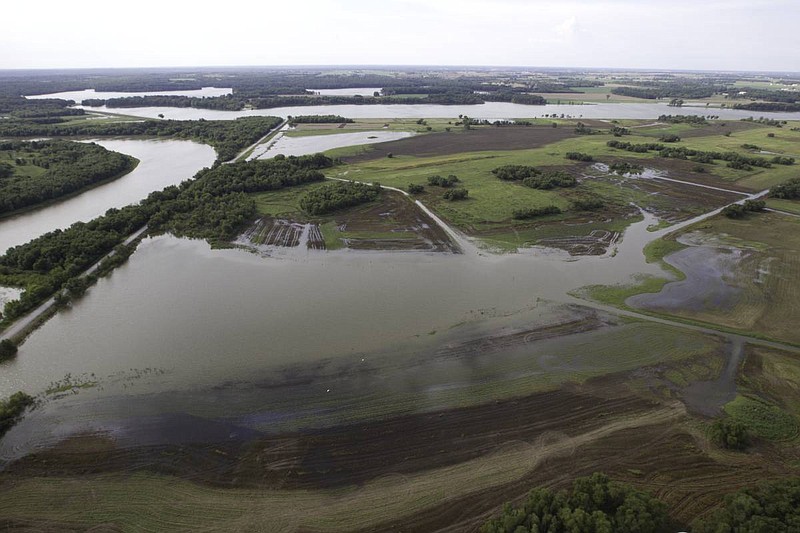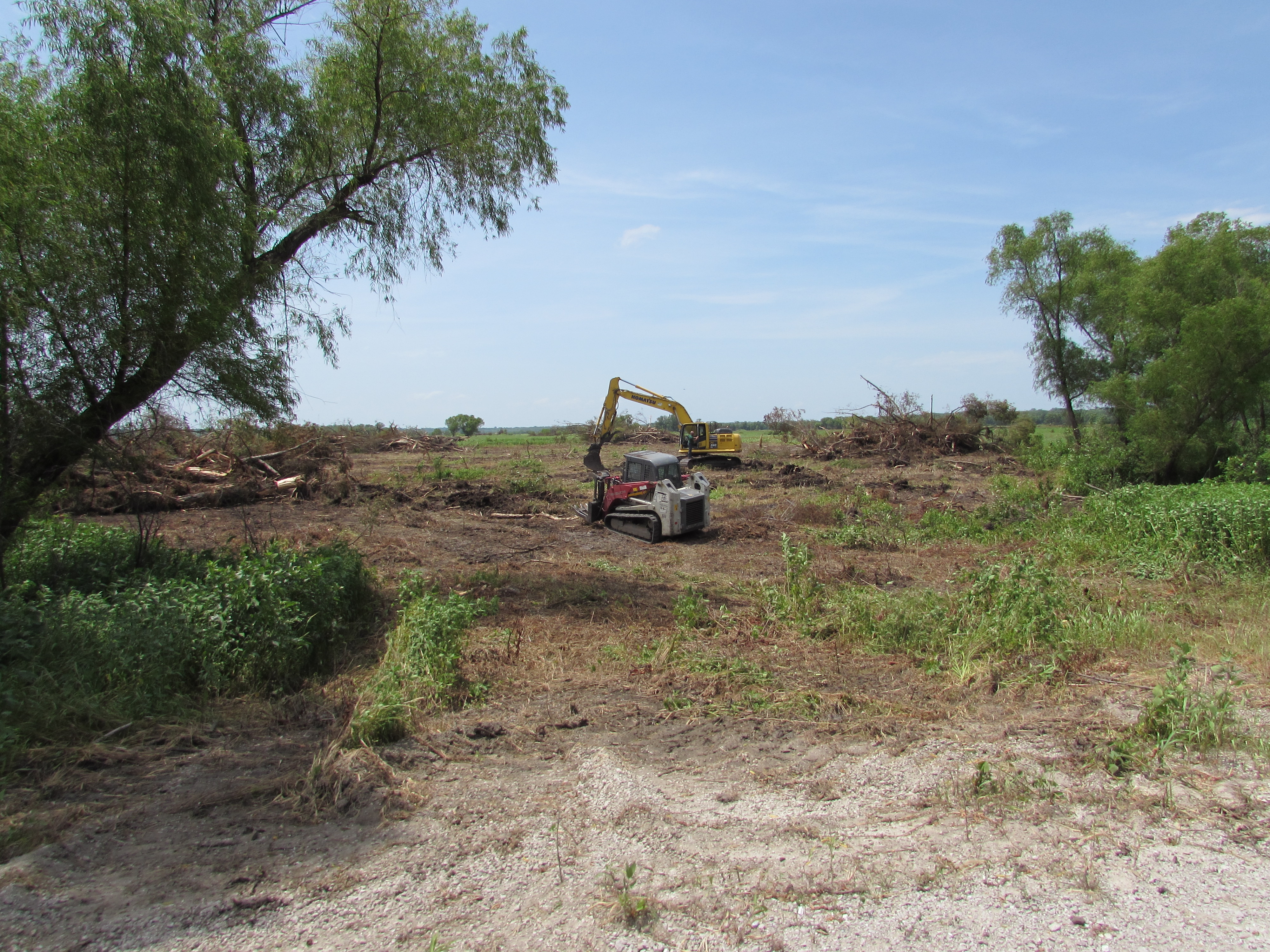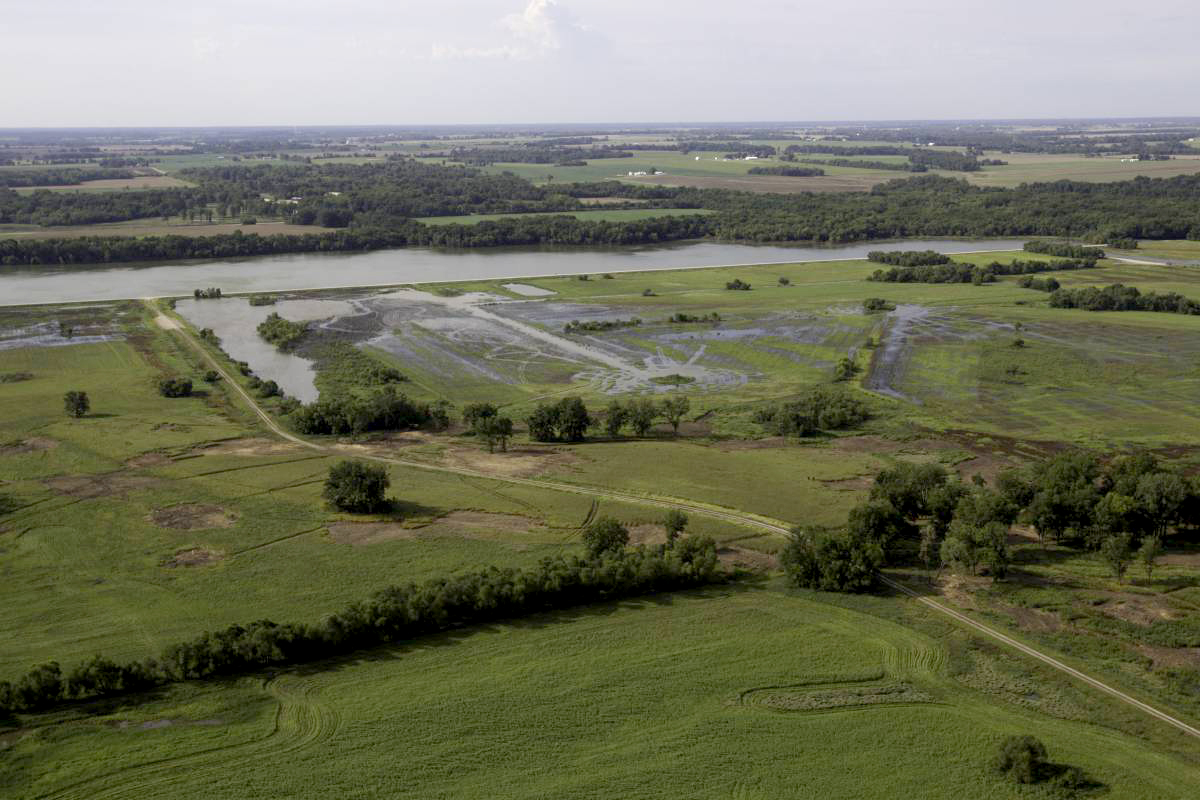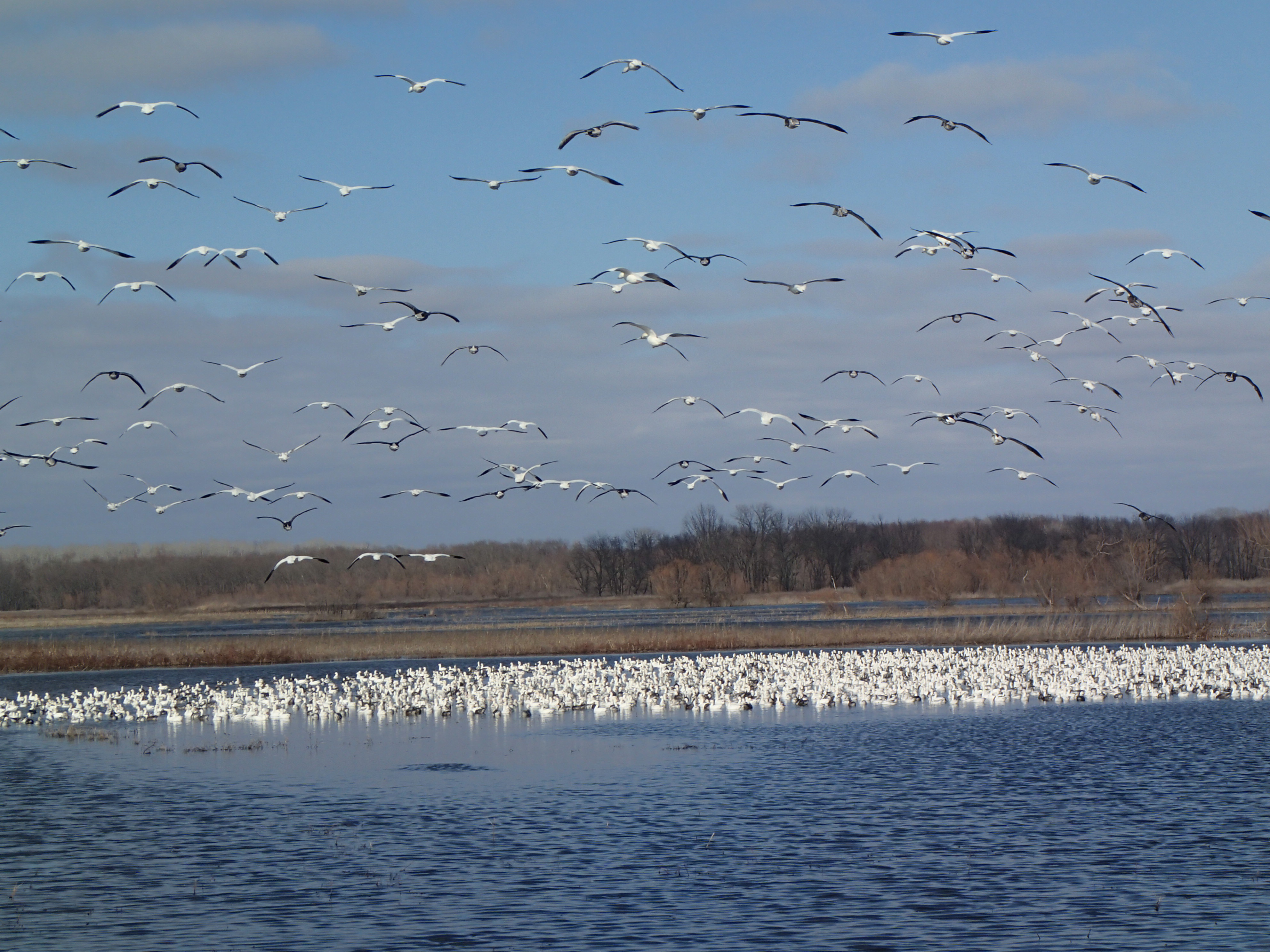A state wetland renovation project has been in development for more than a decade, and there's no end in sight.
Stalled progress on the Schell-Osage Conservation Area has disrupted duck hunters, who previously found plentiful game with more blind-hunting opportunities than any other public spot in the state.
Hunters are frustrated.
The state is asking them to be patient.
The Missouri Department of Conservation began looking at renovating Schell-Osage Conservation Area in 2004 as part of its Golden Anniversary Wetlands Initiative, which took aim at improving the state's five oldest managed wetlands. Schell-Osage is the last leg of the initiative, and crews began surveying the area in 2012.
The project then moved forward in 2018 when MDC drained Schell Lake and discontinued the drawing that provides waterfowl hunters the opportunity to hunt at the conservation area. Little has been done since.
"There's been a variety of little hiccups that kind of magnify sometimes, and so our timeline has been extended a bit longer than what we had initially anticipated," said Frank Nelson, wetlands systems manager with MDC.
Chris Shelton, 78, of Raytown, has hunted ducks at Schell-Osage for more than 50 years and said the constant delays are a sign of project mismanagement.
Public conservation areas are one of the best outlets for waterfowl hunters to cheaply access game, Shelton said. He can't afford to join a private club, he said, so the closure of Schell-Osage shut down one of his best chances to bag birds.
Back in its day, Shelton said, Schell-Osage offered the best waterfowl hunting in the state.
"We were tickled to death to find out that they were going to do some reconstruction at Schell-Osage, but it wasn't supposed to take this long," he said.
The Schell-Osage Renovation Project
One of the oldest publicly managed wetlands in the state, Schell-Osage opened to the public in 1962. It's been enjoyed by waterfowl hunters and bird enthusiasts for nearly as long.
The area had approximately 20,440 ducks, 25,000 snow geese, 213 Canada geese and 10 bald eagles at the start of the year, according to MDC's survey.
The 8,634-acre conservation area sits along the banks of the Osage River in west central Missouri. It's also located in the flood easement of Truman Lake.
Nelson is working with the area manager, biologists and engineers on creating a plan to enhance 3,935 acres and preserve the area for another 60 years. That involves identifying chronic issues and management challenges with the area while also considering accommodations for the various public uses of the land.
"Before humans were here, this area would have been a natural marsh. It would have gone up and down with the floods and with the rainfall events," said Chris Sebastian, a spokesperson for a nonprofit partnering on the project. "But because humans have so effectively drained the landscape and really altered the landscape, this kind of habitat can't exist by itself in much of America. So we do what are called managed wetlands with our state and public partners."
The multi-million dollar renovation has five primary goals: improve the area's floodplain function, maintain hunting blinds, create a pump station, provide quality waterfowl refuge and support other public uses of the land.
Nelson said structures at the wetlands complex are aging and persistent flooding has damaged the area.
The Osage River makes up the area's northern border and it has a long history of flooding.
The addition of the Harry S Truman Dam and Reservoir -- built in 1979 -- increased flood frequency, depth and duration in the Schell-Osage bottoms, according to MDC's renovation project description.
To address flooding, the agency plans to integrate levees in conjunction with the natural grade of the land. Strategically placed spillways will help restore waterways and manage the floodplain as well.
Plans also call for a permanent pump station to be added so wetlands can be supported with water from the Osage River and Truman Reservoir.
MDC has been using two lakes -- the 355-acre Schell Lake and 461-acre Atkinson Lake -- to support the wetlands at Schell-Osage Conservation Area. But the department lacks a mechanism to manage water levels in the lakes and they don't provide enough wildlife foraging opportunities, despite being the primary waterfowl refuge in the area.
Use of the river will reduce water level fluctuation of the lakes, which in turn aids in fish management and maintenance of public access points, according to the renovation description.
Schell Lake is also getting attention to address its aging infrastructure, shallow depth and poor boating access. Deep water excavations and the addition of an underwater structure supporting fish spawning beds in the lake are among renovation plans, as are new fishing jetties.
After the renovation, Schell Lake won't be used to support the wetlands and will instead be a recreational spot, particularly for fishing.
MDC isn't alone in the Schell-Osage Conservation Area renovation.
Ducks Unlimited, a nonprofit focused on wetlands and waterfowl conservation, spearheaded a collaboration that produced $4.5 million for the renovation's design phase.
Sebastian, public affairs coordinator with Ducks Unlimited, said the nonprofit brought together 13 other partners to support the project, including MDC. The various partners contributed $3.5 million, he said, and received a $1 million grant from the U.S. Fish & Wildlife Service.
Those funds support construction design of the pump station and renovation design of the wetlands itself (such as channels and levees) and Schell Lake, Sebastian said. Those are all still in progress, he said.
Following the design phase, Sebastian said the state will take over to implement actual construction.
Delays
Because of flooding and complex logistics, MDC has been in the design phase of the renovation project since 2018.
Nelson said MDC thought it was close to breaking ground for the renovation in 2018, so it drained Schell Lake to begin working on the dirt underneath.
The department then delayed work for what it expected to be a year to let the sediment under the lake dry out and firm up, Nelson said.
"But then we haven't necessarily been able to follow right back up on it," he said. "Like I said, the river's been up a couple years."
Nelson said fluctuating water levels on the Osage River give the department only short windows to work on the renovation. More frequent and extreme downpours have only worsened flooding conditions in the conservation area, making construction impossible.
"It's been in preparation for over a decade now," he said "Which, you know, that's how some of these things go, quite honestly, if you're going to take the appropriate time to try to do it correctly."
Nelson pointed out the renovation of Duck Creek Conservation Area, another part of the 2004 Golden Anniversary Wetlands Initiative he was involved with, also took about a decade to complete.
The planning process itself is also time-consuming, Nelson said, and MDC has experienced the same staffing declines as many other state agencies.
"We're doing this planning process at the same time as doing our regularly assigned duties," he said. "But then it takes some time to kind of get concepts into engineering specifics and then looking at that and making sure everything is lined up."
Shelton, the longtime Schell-Osage hunter, said the project should be completed by now.
"This is four years," he said. "Four years, and they haven't even started."
Shelton said he doesn't understand why MDC didn't have plans in place to start working on other parts of the project, such as bidding out construction of the pump station, back in 2018.
He said he wants to see someone held accountable for not having plans for the construction in place before the conservation area was closed to hunters.
"Granted the Osage is flooded, OK, it's always going to flood," he said. "That's a real bull---- excuse. And right now Schell-Osage is bone dry."
Nelson said much of the planning for the project was based on best-case scenarios.
"I think you always have an optimistic view of how soon things can get done, when in reality it's usually a bit slower," he said.
Nelson said the renovation project "hasn't happened overnight by any means," but is making progress.
Since 2018, Nelson said MDC staff have been on site to remove vegetation from the former Schell Lake where they plan to do the dirt work.
Now, Nelson said the agency is at a stage to begin taking bids from contractors interested in building the pump station, but he's unsure of a timeline for breaking ground this fall.
As of Thursday, the department hadn't released the request for bids.
"At this point, I know that we've got to have a few more T's crossed and I's dotted," he said. "And then it goes to our bid process within the department and that would basically let it out this fall, essentially. Then we can hit the ground whenever conditions are appropriate, which is weather dependent."
Whether Missouri has a wet winter or a dry winter will determine what contractors can and can't do, Nelson said.
Between grant-writing, project planning and construction, Sebastian said he would expect the project to take at least six or seven years to complete.
The continued delays on renovation have led to a bigger price tag.
"It is a multi-million-dollar project," Nelson said. "But I'm not sure what the current estimate is given the rate in which things have gone up in the last two years or so."
It will likely be at least $10 million, he said.
Nelson said he recognizes the strong tradition of hunting and fishing at Schell-Osage Conservation Area, and how the continually delayed renovation work detracts from it. While the department hasn't held a drawing at Schell-Osage in four years, Nelson said a pool has been available for open hunting in the fall.
He said the wetlands will be managed "opportunistically" this fall and hunting will be allowed through the same self-registration system the agency has been using since the 2019 season.
Nelson said waterfowl hunting has been down significantly since the self-registration system was implemented. Last year, 1,122 hunters bagged 1,477 ducks and 46 geese in the area.
"A lot of people are really interested and would like to see things move forward," he said.
"We realize it's not ideal for anybody, and so I appreciate people's patience and realize that to have it done yesterday would be ideal," he continued. "Unfortunately, it's not so; we're just trying to get people to stick with us. We're trying to move as quickly as possible as well as however the weather will allow us."
Updates on the Schell-Osage renovation project will be posted to its page on MDC's website.




